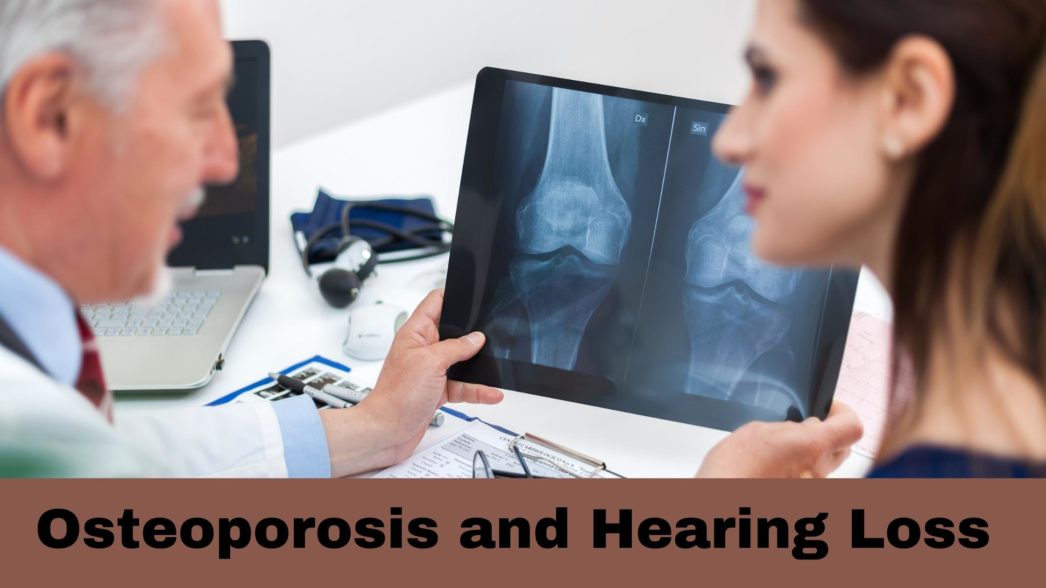Older adults experience an increased risk of developing osteoporosis and hearing loss, two medical conditions that are linked. According to the International Osteoporosis Foundation, nearly 44 million people have osteoporosis or low bone mass. Making bones in the body more vulnerable, osteoporosis can impact health in a variety of ways. Research has shown that it can contribute to the development of hearing loss, a permanent condition that can impact all facets of daily life.
Understanding Osteoporosis
Osteoporosis describes the weakening of bones which makes breakage more likely. After developing throughout adolescence, bones are the strongest (at peak mass) during young adulthood. Throughout the aging process, bone cells are always dissolving and forming. Osteoporosis specifically refers to the rate of bone cells dissolving quicker than bone cells that are forming; reducing bone mass and strength. This causes the bones to become brittle, increasing the risk of fracturing or breaking.
There are various factors that increase the risk of developing osteoporosis including the following:
- Biological & Identity Factors: age, race, sex, and genetic history can impact its development. Older adults, women, white and Asian descent, and people with a family history are likelier to experience osteoporosis.
- According to the Centers for Disease Control and Prevention, 1 in 4 women and 1 in 20 men aged 65 and over have osteoporosis
- Medical conditions: including kidney, liver, celiac disease; lupus, and cancer increase the risk of osteoporosis
- Other: low calcium intake, little physical activity
It is common for people to be unaware of their osteoporosis until they have experienced a fracture or broken bone. This is because early on, the symptoms are not profound and easily detected. After some time, symptoms can include: stooped posture, decrease in height, and back pain.
How Hearing Works
To understand the relationship between osteoporosis and hearing loss, it is helpful to understand how hearing works. The auditory system involves the ears and brain working together to absorb, amplify, and process sound. This includes the:
- Outer ear: consists of the cartilage exterior which is the most visible part of the ear. In addition to the ear canal and eardrum. The portion of the ear absorbs sound from the environment which then travels through the ear canal and lands on the eardrum.
- Middle ear: this movement reaches the auditory ossicles, three connected bones (among the smallest in the human body) in the middle ear. The ossicles help amplify the sound, propelling the soundwaves further into the ear.
- Inner ear: this activates the cochlea which is filled with thousands of hair cells and fluid. These hair cells help translate soundwaves into electrical signals that travel through auditory pathways to reach the brain. The brain is then able to further process and assign meaning to the sound, allowing us to understand what we hear.
When any of these components are damaged, this process is disrupted which impacts hearing capacity.
Link Between Osteoporosis & Hearing Loss
Studies have shown that people with osteoporosis are more likely to experience hearing loss. This includes a 2015 study published in the Journal of Clinical Endocrinology and Metabolism.
- Study: researchers collected and analyzed information provided by a national health database. This included 10,660 people diagnosed with osteoporosis to 31,980 without osteoporosis.
- Findings: in comparing both groups, researchers found that people with osteoporosis were:
- 76% more likely to develop hearing loss compared to people without hearing loss
- This rate increases with women with osteoporosis who were 87% more likely to develop hearing loss
This significant correlation highlights the link between both conditions. Researchers have suggested that osteoporosis can impact the ossicles – bones in the middle ear. These specific bones help amplify sound which is sent to the inner ear for more processing. The deterioration of these bones would reduce their capacity and the role they play in hearing.
Because of this increased risk factor, people with osteoporosis should prioritize hearing health. A useful way to do this is to have your hearing assessed regularly. Hearing tests are conducted by hearing health specialists like audiologists and identify any impairment. This allows you to intervene early and protect your hearing and overall health!


